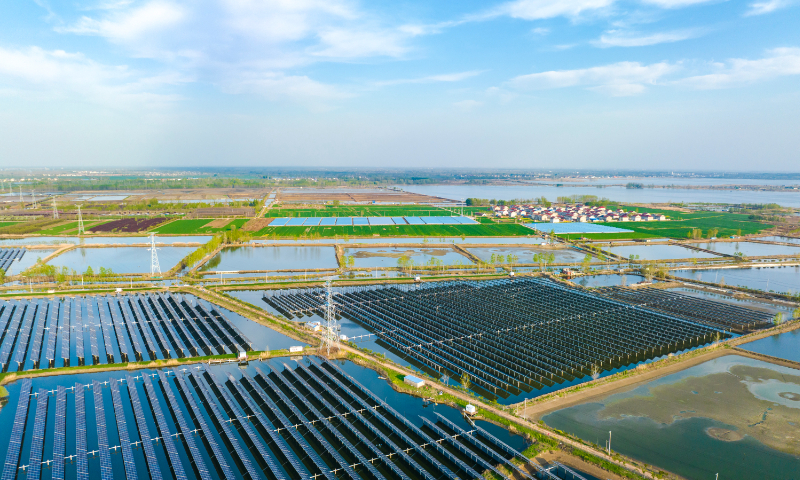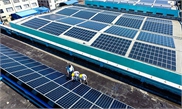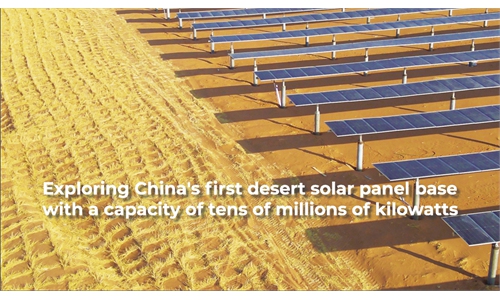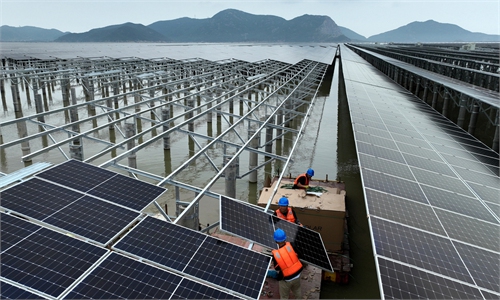
Solar panels are arrayed over a modern fishery industrial park in Donghai county, East China's Jiangsu Province, on April 9, 2023. Donghai has made full use of wasteland, river and lake shores and rooftops to build photovoltaic power generation projects, which helped increase farmers' incomes and contributed to rural revitalization. Photo: cnsphoto
Electricity generated from the world's largest solar plant built inside a salt farm, with a generating capacity of 1 million kilowatts, was connected to the grid on Saturday in North China's Tianjin Municipality.
The solar power plant utilizes one land parcel for three functions at the same time: generating power form solar cells, producing salt from sunlight, and aquaculture, the Xinhua News Agency reported.
The distance between the arrays of solar panels is extended to 14 meters, almost twice the length at normal solar plant, to allow in sunshine for salt making.
The panels are tilted at 17 degrees, rather than around 40 degrees at normal solar plants, which could provide maximum sunshine to the water surface on a yearly basis.
The solar panels were also manufactured in a way that their backs are also capable of absorbing solar energy, improving its power-generating efficiency by 5-7 percent.
The solar plant is built on top of a salt farm occupying an area of 1,333.33 hectares and has the total capacity to generate 1.5 billion kilowatt-hours worth of electricity a year. At full capacity, the project is expected to save 500,000 tons of standard coal each year and reduce carbon dioxide emissions by 1.25 million tons, according to the report.
Multiple localities in China have been the tapping combined industrial model centered around solar.
Lin Boqiang, director of the China Center for Energy Economics Research at Xiamen University, told the Global Times that the integral approach in using the land helps stakeholders to generate more revenue, and is driven by market entities.
In Xilin Gol League's Sonid Right Banner in North China's Inner Mongolia Autonomous Region, sheep roam and graze on grass pastures inside a photovoltaic power base, whose modules are installed 1.5 meters higher than usual.
In southern China, solar panels are installed above fish ponds or paddy rice fields, without hindering aquaculture or agriculture.
China's investment in the new energy sector hit 9.2 trillion yuan ($1.36 trillion) in 2022, 37 percent of which flowed into wind and solar, according to a January report from Chinese consultant firm CINNO Research.
CINNO Research forecast that the current development of the new energy sector will maintain high growth rates over the next three to five years, making it an important driver of China's economic growth.
Company projects with a total capacity of 9.43 million kilowatts were put into operation during the first half of 2023, which is 10.4 times than that of the corresponding period last year, according to China Huadian Corporation.
Global Times



